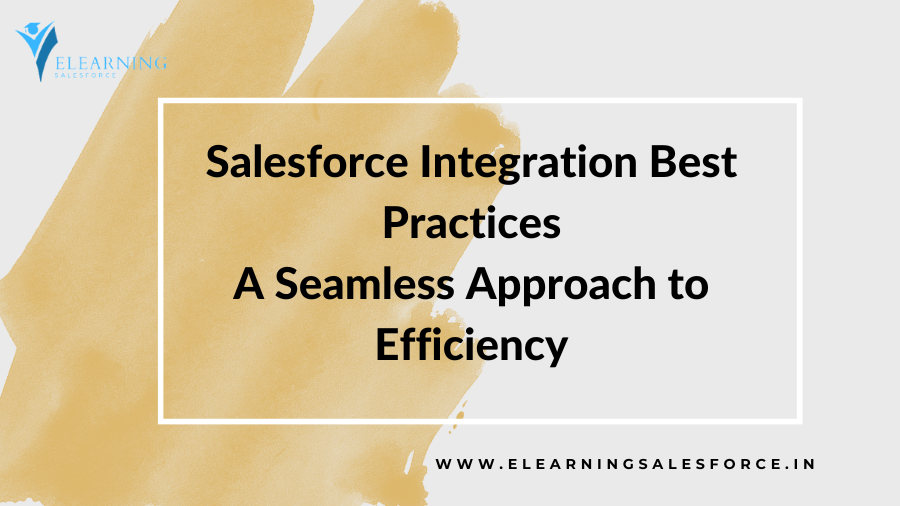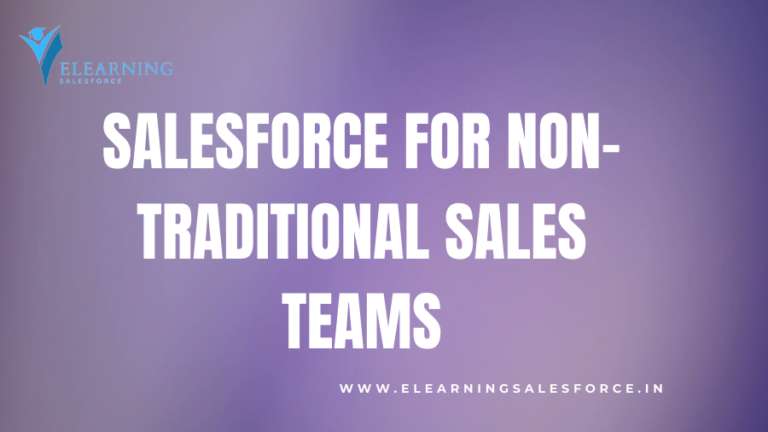Introduction Salesforce Integration
Salesforce, with its robust capabilities, has become a cornerstone for businesses seeking effective customer relationship management (CRM). As organizations grow, the need for Salesforce integration becomes imperative to streamline operations. In this article, we explore the best practices for seamless Salesforce integration that not only enhance efficiency but also ensure data accuracy and security.
Understanding Salesforce Integration
Before delving into best practices, it’s crucial to understand what Salesforce integrations entails. Salesforce serves as a comprehensive platform that centralizes customer data, making it a preferred choice for businesses. Integrating Salesforce involves connecting it with other systems, applications, or databases, allowing for a unified and synchronized workflow.
Benefits of Proper Integration
The benefits of proper Salesforce integration are manifold. Firstly, it ensures improved data accuracy by eliminating silos and redundancies. Secondly, it enhances efficiency and productivity by automating processes and reducing manual efforts. Lastly, it streamlines business processes, providing a holistic view of customer interactions.
Common Challenges in Salesforce Integration
Despite its advantages, Salesforce integration comes with its set of challenges. Data security concerns loom large, as integrating systems may expose sensitive information. The complexity of integration processes and the subsequent maintenance requirements also pose challenges for organizations.
Salesforce Integration Best Practices
Choosing the Right Integration Method
The first step in achieving successful integration is selecting the right method. Businesses must evaluate their unique needs and choose from various integration methods like APIs, middleware, or connectors. Matching the integration method to specific business requirements is paramount.
Data Mapping and Transformation
Efficient data mapping ensures that data is compatible across integrated systems. It involves aligning data structures, field names, and values. Transformation processes must be in place to handle variations in data formats and structures.
Error Handling and Logging
No integration is flawless. Robust error handling mechanisms are essential to identify and resolve issues promptly. Implementing logging and monitoring tools aids in tracking errors and performance issues, contributing to a smoother integration experience.
Testing and Validation
Thorough testing is the backbone of successful integration. Rigorous testing processes must be in place to validate data accuracy, system compatibility, and overall integration functionality. Regular validation checks further ensure ongoing data integrity.
Security Measures
Security is non-negotiable in integration processes. Implementing secure authentication methods, such as OAuth, and enforcing role-based access controls safeguard sensitive data from unauthorized access.
Documentation
Comprehensive documentation is often underestimated but plays a pivotal role in the long-term success of integration. Detailed documentation aids in understanding the integration architecture, making troubleshooting more efficient. Version control for changes ensures transparency.
Real-life Examples of Successful Salesforce Integration
To illustrate the effectiveness of these best practices, let’s explore real-life examples of organizations that have seamlessly integrated Salesforce into their operations. These case studies highlight the positive impact of strategic integration decisions and the lessons learned from these experiences.
Tips for Continuous Improvement
Integration is an ongoing process. Regularly reviewing and updating integration processes is essential for adapting to evolving business needs. Incorporating feedback from end-users and monitoring industry advancements ensures continuous optimization.
Conclusion
Salesforce integration, when done right, is a game-changer for businesses aiming to elevate their CRM capabilities. By adhering to best practices such as choosing the right integration method, ensuring data accuracy, and prioritizing security, organizations can unlock the full potential of Salesforce.
FAQs
- How often should integration processes be reviewed and updated?
- Regular reviews are recommended, at least annually, or more frequently in response to business changes.
- What role does documentation play in the integration process?
- Comprehensive documentation facilitates troubleshooting and ensures transparency in the integration architecture.
- Are there any risks associated with Salesforce integration?
- Yes, common risks include data security concerns, integration complexity, and ongoing maintenance challenges.
- Can Salesforce integration be done without technical expertise?
- While some tools offer user-friendly interfaces, technical expertise is recommended for seamless and secure integration.
- How can businesses measure the success of their Salesforce integration?
- Success can be measured through improved efficiency, enhanced data accuracy, and positive feedback from end-users.



